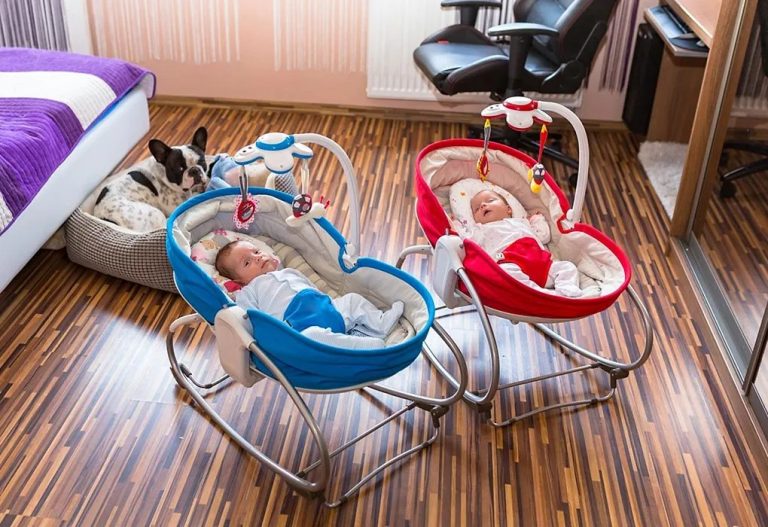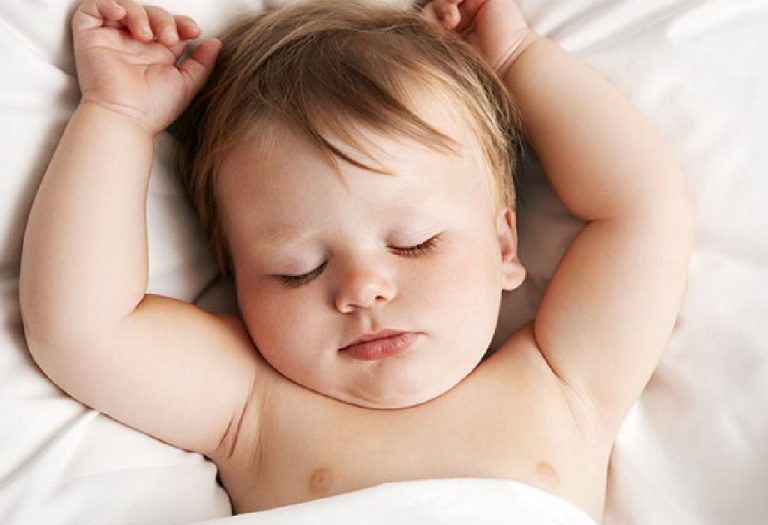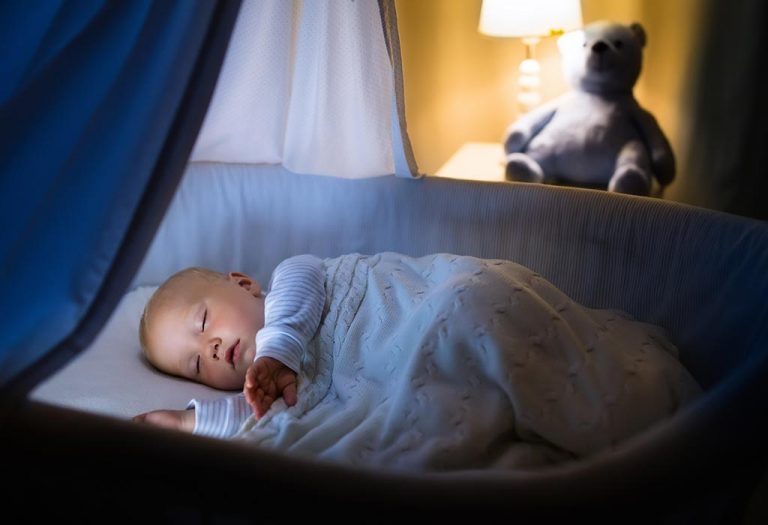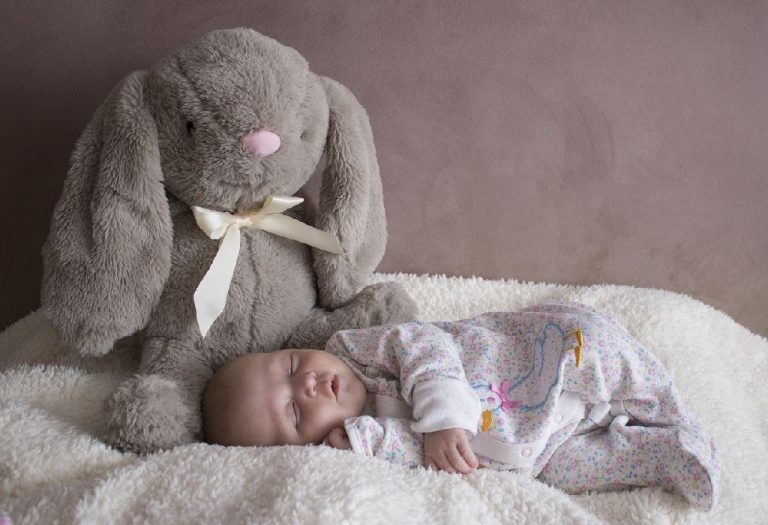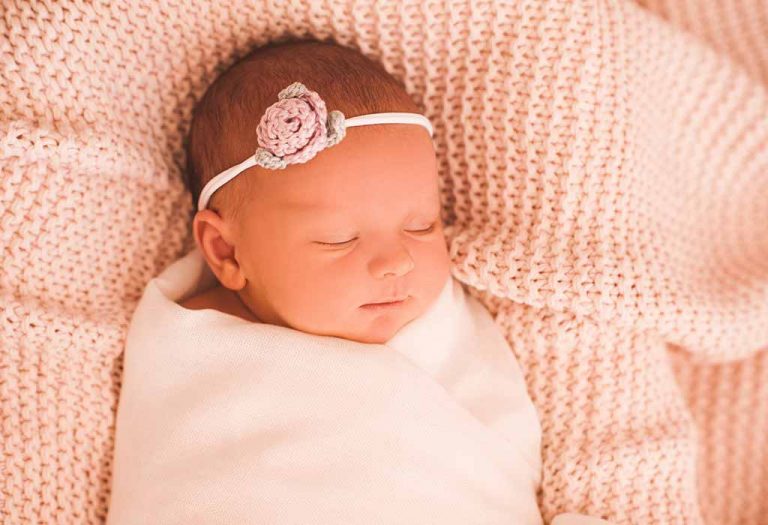Can Babies Sleep in a Swing?

- Is It Safe to Put Your Baby to Sleep in a Swing?
- How Long Can a Baby Sleep in a Swing?
- Drawbacks of Using Baby Swings
- How to Use Baby Swing Safely?
- How to Break the Baby’s Habit of Sleeping in a Swing?
- Alternatives to Swings
- FAQs
Since many parents continue to use infant swings to lull their babies to sleep, they even wonder if a baby can sleep in a swing all night without any problem. There are certain development issues that can result due to the overuse of a swing. But even before that, sleeping in a swing is not a natural way of falling asleep. Pediatricians often advise against letting a newborn in swing to sleep for extended periods, as it can affect their breathing and overall safety. Let’s dive in to learn more about this.
Is It Safe to Put Your Baby to Sleep in a Swing?
Are infant swings safe? While many children tend to fall asleep in an infant swing easily, that isn’t a good habit to be established. It’s fine occasionally, but it shouldn’t be a regularity.
How Long Can a Baby Sleep in a Swing?
If your child is older than 6 months, you should have already begun weaning him off the swing by now.
Drawbacks of Using Baby Swings
While your baby might have a gala time on the swing, using it for long durations and repetitively is not good. As a risk of a baby sleeping in a swing, SIDS is just one of the issues regarding its usage. There are a few other risks of newborns sleeping in the swing as well.
1. Deprivation in the Development of the Child
Babies need to spend time by themselves and be given the chance to explore the space around them. If you continue to keep your kid in the baby swing all the while, this restricts movement as well as limits the way he would use the space around him. An absence of trying out even the basic movements such as crawling, rolling, and walking can lead to major developmental problems.
2. Lack of Sleep and Risk of SIDS
If a kid does not sleep in the right manner, there is a huge risk of him falling prey to Sudden Infant Death Syndrome or SIDS. The positions in the swing can make it difficult for him to get oxygen while sleeping. Similarly, the lack of stability in the swing can cause the baby to wake up frequently at the slightest movement.
3. Reduced Safety and Increased Chances of Injury
Quite a few babies tend to experience harm in the form of bruises and bumps, while an unlucky few might even experience fatal entanglement due to the swing straps, ending in suffocation. If the material of the swing itself is not up to the mark, it can break and lead to further injuries, too.
How to Use Baby Swing Safely?
Using a baby swing can be a helpful tool for soothing your infant, but it’s essential to use it safely to avoid any potential risks. Here are some American Academy of Pediatrics guidelines to ensure your baby enjoys the swing securely (1).
1. Always Supervise Your Baby
Never leave your baby unattended in the swing. Constant supervision ensures you can quickly respond if your baby shows discomfort or distress.
2. Follow Manufacturer’s Guidelines
Always adhere to the weight and age limits specified by the manufacturer. Using the swing according to these guidelines ensures it functions correctly and safely for your baby.
3. Secure Straps and Harnesses
Ensure the swing’s straps and harnesses are fastened securely whenever you place your baby in the swing. This prevents your baby from slipping or falling out.
4. Limit Swing Time
Avoid letting your baby spend extended periods in the swing. Prolonged use can lead to development issues and is not recommended for sleeping, as it’s not a natural position for a baby.
5. Place the Swing on a Flat Surface
Ensure the swing is set up on a flat, stable surface to prevent tipping. Avoid placing the swing on elevated surfaces like tables or beds.
6. Keep Swing at a Low Speed
Use the lowest speed setting that soothes your baby. Higher speeds can be unsafe and might cause discomfort or overstimulation.
How to Break the Baby’s Habit of Sleeping in a Swing?
If you are looking for ways to change the habits of your little one, you are in for some good news – it’s not too late. There are some simple ways that can help you break that habit and allow your baby to sleep properly in his crib or bed without worries.
1. Continue With Nap Transitions as Often as Possible
It is quite common to observe your baby sleep peacefully in the crib or the bed as well as take a couple of naps whenever he spends time in the swing. Therefore, a baby might also feel strange to nap in the crib and try to resist it. In such cases, wait for a while and try transitioning after a few days.
2. Place the Child in the Crib No Matter What
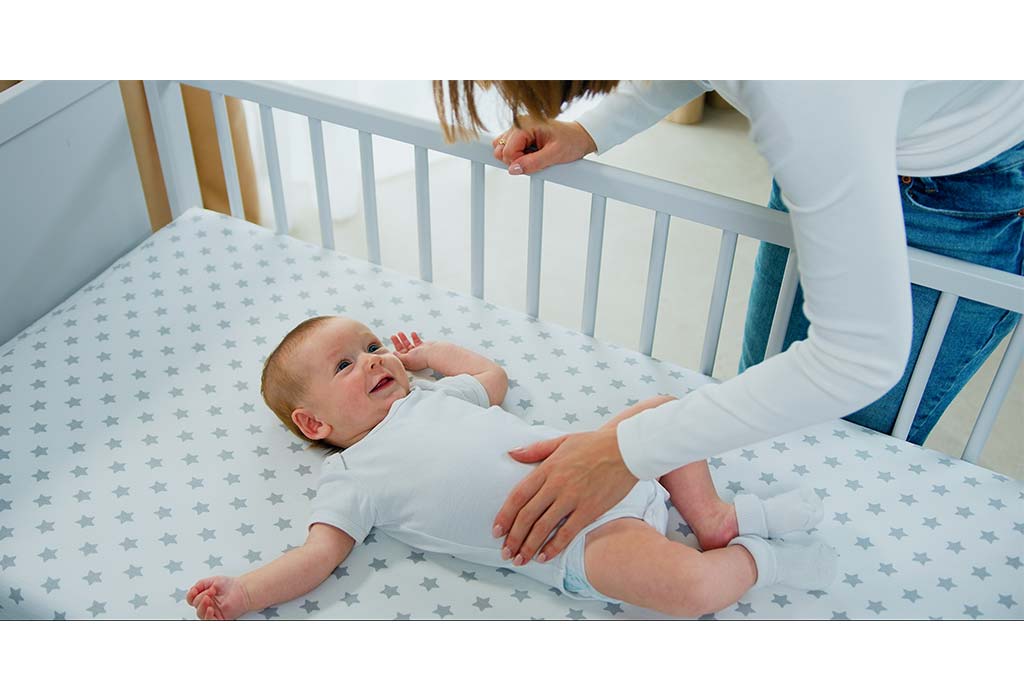
Your baby may resort to crying and might want to observe something else or look in a different direction while he sleeps. Most of the times, this continues for about 15 minutes or so, following which many babies do fall asleep soundly.
3. Keep Your Baby Awake in a Stationary Swing
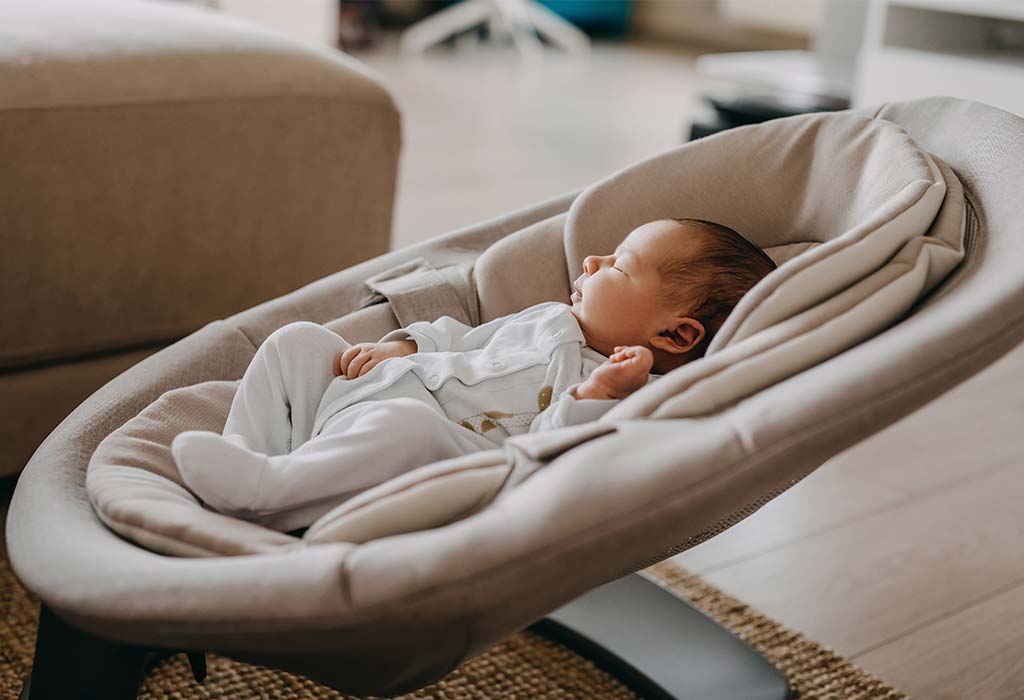
Let your baby be awake when you place him in the swing. As the necessity of movement fades away, he will begin to fall asleep in a stationary swing. All that remains then is the transition from the swing to the crib itself.
4. Reduce the Speed of Swinging Day By Day
Some babies may resist being put into a stationary swing when awake and would want the swing to be rocked back and forth. Well, you can continue with that but try to keep the swinging motion lower than before. As your baby starts getting used to it, you can reduce it further every time until he gets used to sleeping totally motionless.
5. Place the Swing Alongside the Baby’s Crib
Many mothers tend to keep the swing closer to their own bed so that they can rock the baby easily. This also tends to create a mental distance between the baby’s own crib, alienating it in a way. By placing the swing closer to the crib, the baby will begin to accept it sooner and it will be easier to transition a sleeping child to the crib as well.
6. Begin With Bedtimes Before Transitioning Naps
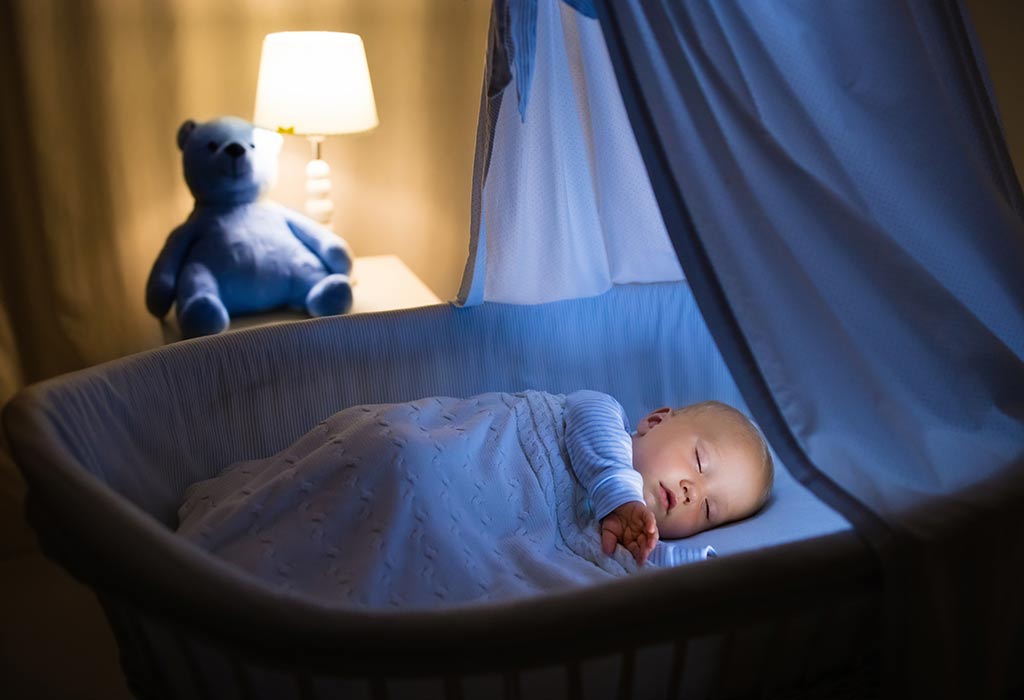
If your baby absolutely loves to nap in the swing, he would also prefer to fall asleep in the swing first during bedtime as well. This is also the time when a baby is quite tired and would readily fall asleep. Take advantage of this to transition the bedtime to the crib first. Once that becomes normal, you can start tackling naptime, too.
7. Let Your Baby Understand the Signs of Sleeping
One of the major reasons why babies have problems switching to cribs from a swing is because they begin to interpret those actions as a routine for falling asleep. A light air and rocking motion automatically begins to lull them to sleep out of habit. Therefore, use other sleeping cues like lullabies, or a gentle fan to help the baby sleep in the crib. This will take some time, but it will work.
8. Transition to the Crib Once the Baby Falls Asleep
Some babies might be too stubborn and react strongly when coerced to sleep in the crib. They tend to have a very strong bond with the swing itself. That, too, can be used as an advantage. If your child is refusing to sleep, place him in the swing but avoid rocking it. He will wonder for a while and then fall asleep, after which you can shift him to the crib. Slowly and surely, your baby will get used to the feeling of the crib.
9. Establish a Consistent Sleep Routine

Creating a consistent sleep routine can help signal to your baby that it’s time to sleep, regardless of the location. This routine could include activities like a warm bath, reading a book, or singing a lullaby before placing your baby in the crib. Over time, these activities will help your baby associate the crib with sleep.
10. Gradually Reduce Swing Use During the Day
Begin by reducing your baby’s time in the swing during the day. Encourage more crib time for play and short naps. This gradual reduction will help your baby get accustomed to the crib and reduce dependency on the swing for comfort and sleep.
Alternatives to Swings
Since the baby sleeping in a swing is bad for the spine, there are a few safe alternatives you can use (2).
1. Bassinets
Bassinets are baby baskets mounted on legs, making them easy to move around the house. Many are foldable and portable, which is convenient for traveling.
2. Baby Carrier
Wearing your baby in a carrier lets you keep them close while gently swaying with your movements. This method can be soothing for the baby and convenient for you.
3. Swaddling
Swaddling your baby snugly in a blanket can provide a sense of security and warmth, helping them to feel calm and ready for sleep. Make sure to swaddle safely to prevent overheating and ensure proper hip development.
4. Cribs
Cribs, or cots, are the safest choice for infants to sleep in. They provide a firm surface ideal for a baby’s sleep, and the sidebars offer support when the baby starts to stand.
5. Playards
Playards are secure, enclosed spaces where babies can play or sleep. They often feature mesh or fabric sides and are larger than cribs and bassinets, making them a portable option for various activities.
6. Cradles
Cradles are more robust than bassinets but smaller than cribs. They can be rocked to soothe the baby to sleep, and some models come with wheels for easy mobility.
7. Rocking Baby While in Your Arms
Holding and gently rocking your baby in your arms can provide comfort and security, helping them to relax and fall asleep.
FAQs
Parents do have a few common questions since baby swings tend to be an inseparable part of their lives
1. Can a swing help soothe my fussy baby?
While your baby sleeping in a swing for naps would be more common, swinging can, at times, help in soothing down a fussy child as well.
2. What if my baby can’t live without her swing?
Use the swing only to help the child fall asleep. The moment he does, shift him to the crib.
3. How do I know if my baby is ready to transition from a swing to a crib?
Signs that your baby is ready to transition from a swing to a crib include being able to fall asleep without the motion of the swing and showing increased mobility, such as rolling over. Starting the transition is important if your baby exceeds the swing’s weight limit.
This was all about baby sleeping in swings. There are drawbacks for a baby sleeping in a swing chair throughout infancy. By understanding where this habit stems from and taking corrective action early on, you can help your baby develop the right sleeping habits.
References/Resources:
1. Safe and sound: tips for using infant swings; American Academy of Pediatrics; https://publications.aap.org/aapnews/article/34/1/25/24388/Safe-and-sound-tips-for-using-infant-swings
2. Where should my baby sleep? A guide; National Childbirth Trust; https://www.nct.org.uk/where-should-my-baby-sleep-guide
3. Sudden Infant Death Syndrome (SIDS); Boston Children’s Hospital; https://www.childrenshospital.org/conditions/sudden-infant-death-syndrome-sids
4. Container Baby Syndrome: How Equipment Can Hinder a Child’s Development; Nationwide Children’s Hospital; https://www.nationwidechildrens.org/family-resources-education/700childrens/2018/10/container-baby-syndrome
5. Important Milestones: Your Baby By Six Months; CDC; https://www.cdc.gov/ncbddd/actearly/milestones/milestones-6mo.html
6. How to Keep Your Sleeping Baby Safe: AAP Policy Explained; American Academy of Pediatrics; https://www.healthychildren.org/English/ages-stages/baby/sleep/Pages/A-Parents-Guide-to-Safe-Sleep.aspx
7. Helping baby sleep through the night; Mayo Clinic; https://www.mayoclinic.org/healthy-lifestyle/infant-and-toddler-health/in-depth/baby-sleep/art-20045014
Baby Sleep in Bassinet
Baby Sleep Problems
Infant Sleeping Positions
Ways to make Baby Sleep in Night
Was This Article Helpful?
Parenting is a huge responsibility, for you as a caregiver, but also for us as a parenting content platform. We understand that and take our responsibility of creating credible content seriously. FirstCry Parenting articles are written and published only after extensive research using factually sound references to deliver quality content that is accurate, validated by experts, and completely reliable. To understand how we go about creating content that is credible, read our editorial policy here.







